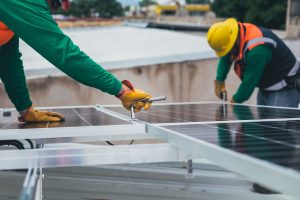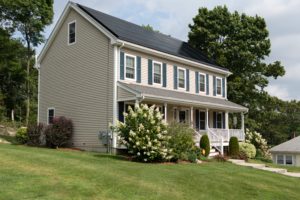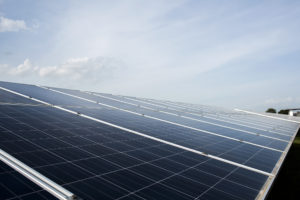One of the largest solar projects in the U.S. to operate in 2025.
“This is not only the largest solar plant in Arizona and one of the largest in the United States, but it will also be the most significant solar resource in SRP’s energy portfolio,” said Jim Pratt, CEO of SRP. “SRP will be quadrupling the amount of utility-scale solar on our power system in just the next two years, with CO Bar Solar as a key part of this. Nearly half of all energy delivered to SRP customers will come from carbon-free resources by the end of 2025.”
CO Bar Solar is a 1.2 GW landmark solar and storage complex being developed by Clēnera, a subsidiary of Enlight Renewable Energy. The project, which is expected to be one of the largest in the United States, will occupy up to 2,400 acres on Babbitt Ranches private land in Coconino County. Construction on CO Bar Solar is set to begin in the fourth quarter of 2023 and is expected to reach commercial operation in phases throughout 2025.
“We are thrilled to be partnering with SRP again on CO Bar Solar and providing them with reliable, clean energy,” said Gilad Yavetz, CEO of Enlight. “CO Bar represents a strategic project in Arizona, serving as a prime example of our approach to greenfield development that capitalizes on sizable interconnection positions.”
Jason Ellsworth, CEO at Clēnera, added: “We are excited to deliver increased access to affordable, clean renewable energy in Arizona. We look forward to a fruitful long-term relationship with SRP, as we continue to develop additional renewable energy projects in the state.”
Over the course of the CO Bar Solar construction timeline, approximately 550 construction jobs will be created, with many being local. Once complete, SRP will receive enough power from this resource to meet the needs of approximately 180,000 average-size homes.
“In our efforts to support the delivery of renewable energy, we acknowledge the terrific and wonderful participation of so many businesses and government entities involved in the process to make this happen,” said Babbitt Ranches President and General Manager Billy Cordasco. “We appreciate the valuable input from the Arizona Game and Fish Department, Arizona Department of Transportation, Arizona State Land Department, Coconino County and everyone involved in the Western CO Bar Legacy Conservation Community for the benefit of future generations.”
SRP officials say the utility has taken significant steps toward decarbonizing its power system while maintaining reliability and affordability. By the end of 2025, SRP expects to have more than 3,000 MW of renewables online. In addition to its renewable resource commitments, SRP has among the largest battery storage investments in the Western U.S., with over 1,100 MW of battery storage projects that will be online by the end of 2024. SRP officials say that with all the utility’s recent strategic resource additions and decisions, SRP is proving to achieve its sustainability goals. More than 75% of SRP’s energy is expected to come from carbon-free resources by the end of 2035. QCBN







